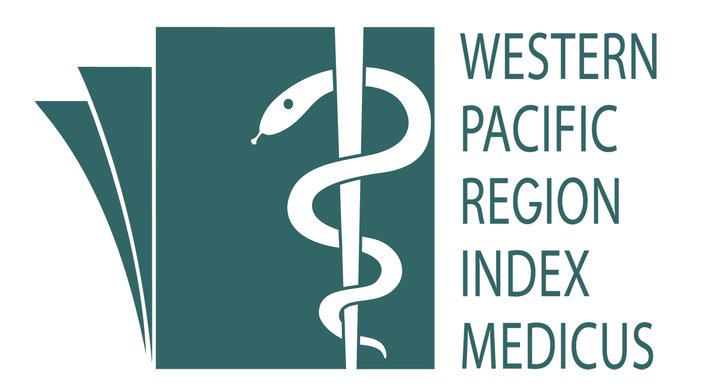The Effectiveness of the Long-Lasting Insecticidal Nets in Controlling Malaria Vector: A Meta-Analysis of Experimental Hut Studies
Keywords:
Malaria, Long-Lasting Insecticide Nets (LLINs), Experimental Hut, InsecticideAbstract
Background:
Malaria is a life-threatening, preventable, and curable vector borne disease caused by parasites that are transmitted to people through the bites of infected female Anopheles. The WHO Global Report 2010-2016 reported insecticide resistance in malaria. The main objective of this study is to determine the effectiveness of new generation Long-Lasting Insecticidal Nets (LLIN) compared to standard LLIN and untreated nets in terms of the mortality rate of adult female Anopheles gambiae.
Methods:
A comprehensive review of the literature was published in three databases (PubMed, Ovid, EBSCO Host) since 2010. Publications were searched with keywords including malaria, long-lasting treated bed net, long lasting insecticide-treated bed net, LLIN, and experimental hut. The search has identified 60 articles. Based on the PRISMA flowchart, 10 articles are qualified for data collection and analysis. The gathered data was analysed using Review Manager.
Results:
Following meta-analysis between subgroups, a risk difference of 0.31 between standard LLINs versus untreated net (p<0.001, I²=100% 95% CI:0.01,0.60). A comparison of upgraded LLINs with the untreated net has shown a significant difference with a pooled risk difference of 0.54 favours upgraded LLINs (p<0.001, I²=100% 95% CI: 0.54,0.84). Comparison between upgraded LLINs versus standard gave an overall risk difference of 0.24 (p < 0.001, I² = 100%, 95% CI: 0.10–0.39).
Conclusion:
Upgraded LLINs significantly increase Anopheles mortality compared to standard LLINs and untreated nets, suggesting their potential for improved malaria control. Thus, using upgraded nets in the field and translating them into malaria preventive programs would help achieve the target and improve health outcomes for those living in endemic areas.
References
World Health Organization. Malaria Key Facts. World Health Organization; 2019 . Accessed November 2018. https://www.who.int/news-room/fact-sheets/detail/malaria.
World Health Organization. World Malaria Report. World Health Organization; 2018. Accessed November 2018. https://www.who.int/publications/i/item/9789241565653.
World Health Organization. Update on the E-2020 initiative of 21 malaria-eliminating countries: report and country briefs. World Health Organization; 2018. Accessed November 2018. https://www.who.int/publications/i/item/WHO-CDS-GMP-2018.10.
Ranson H, N’guessan R, Lines J, Moiroux N, Nkuni Z, Corbel V. Pyrethroid resistance in African anopheline mosquitoes: what are the implications for malaria control? Trends in parasitology. 2011;27:91-8.
Mitchell SN, Stevenson BJ, Müller P, Wilding CS, Egyir-Yawson A, Field SG, et al. Identification and validation of a gene causing cross-resistance between insecticide classes in Anopheles gambiae from Ghana. Proceedings of the National Academy of Sciences. 2012;109(16):6147-52.
Gleave K, Lissenden N, Richardson M, Choi L, Ranson H. Piperonyl butoxide (PBO) combined with pyrethroids in insecticide-treated nets to prevent malaria in Africa. Cochrane Database Syst Rev. 2018;11(11):Cd012776.
World Health Organization. World Malaria Day 2017: malaria prevention works, let's close the gap. World Health Organization; 2017. Accessed November 2018. https://www.who.int/news-room/events/detail/2017/04/25/default-calendar/world-malaria-day-2017.
Allossogbe M, Gnanguenon V, Agossa FR, Zola-Sahossi J, Akinro B, Houtoukpe A, et al. Comparative efficacy of five types of long-lasting insecticide-treated nets (PermaNet 3.0®, PermaNet 2.0®, Olyset Plus®, Olyset Net®, and LifeNet®) in a semi-natural environment against resistant Anopheles gambiae sensu lato and Mansonia africana in Cove, Benin. International Journal of Mosquito Research 2017; 4(5): 07-13 2017.
Strode C, Donegan S, Garner P, Enayati AA, Hemingway J. The impact of pyrethroid resistance on the efficacy of insecticide-treated bed nets against African anopheline mosquitoes: systematic review and meta-analysis. PLoS Med. 2014 Mar 18;11(3):e1001619. doi: 10.1371/journal.pmed.1001619. PMID: 24642791; PMCID: PMC3958359.
Djenontin A, Ahoua Alou LP, Koffi A, Zogo B, Duarte E, N'Guessan R, et al. Insecticidal and sterilizing effect of Olyset Duo(R), a permethrin and pyriproxyfen mixture net against pyrethroid-susceptible and -resistant strains of Anopheles gambiae s.s.: a release-recapture assay in experimental huts. Parasite (Paris, France). 2015;22:27.
N'Guessan R, Odjo A, Ngufor C, Malone D, Rowland M. A Chlorfenapyr Mixture Net Interceptor(R) G2 Shows High Efficacy and Wash Durability against Resistant Mosquitoes in West Africa. PLoS One. 2016;11(11):e0165925.
Ngufor C, Fagbohoun J, Critchley J, N'Guessan R, Todjinou D, Malone D, et al. Which intervention is better for malaria vector control: insecticide mixture long-lasting insecticidal nets or standard pyrethroid nets combined with indoor residual spraying? Malaria journal. 2017;16:340.
Ngufor C, N'Guessan R, Fagbohoun J, Odjo A, Malone D, Akogbeto M, et al. Olyset Duo(R) (a pyriproxyfen and permethrin mixture net): an experimental hut trial against pyrethroid resistant Anopheles gambiae and Culex quinquefasciatus in Southern Benin. PLoS One. 2014;9(4):e93603.
Ngufor C, N'Guessan R, Fagbohoun J, Todjinou D, Odjo A, Malone D, et al. Efficacy of the Olyset Duo net against insecticide-resistant mosquito vectors of malaria. Science translational medicine. 2016;8(356):356ra121.
Camara S, Ahoua Alou LP, Koffi AA, Clegban YCM, Kabran JP, Koffi FM, et al. Efficacy of Interceptor((R)) G2, a new long-lasting insecticidal net against wild pyrethroid-resistant Anopheles gambiae s.s. from Cote d'Ivoire: a semi-field trial. Parasite (Paris, France). 2018;25:42.
Bayili K, N'do S, Namountougou M, Sanou R, Ouattara A, Dabire RK, et al. Evaluation of efficacy of Interceptor((R)) G2, a long-lasting insecticide net coated with a mixture of chlorfenapyr and alpha-cypermethrin, against pyrethroid resistant Anopheles gambiae s.l. in Burkina Faso. Malaria journal. 2017;16:190.
Gunasekaran K, Sahu SS, Vijayakumar T, Subramanian S, Yadav RS, Pigeon O, et al. An experimental hut evaluation of Olyset Plus, a long-lasting insecticidal net treated with a mixture of permethrin and piperonyl butoxide, against Anopheles fluviatilis in Odisha State, India. Malaria journal. 2016;15:375.
Pennetier C, Bouraima A, Chandre F, Piameu M, Etang J, Rossignol M, et al. Efficacy of Olyset(R) Plus, a new long-lasting insecticidal net incorporating permethrin and piperonyl-butoxide against multi-resistant malaria vectors [corrected]. PLoS One. 2013;8(10):e75134.
Koffi AA, Ahoua Alou LP, Djenontin A, Kabran JP, Dosso Y, Kone A, et al. Efficacy of Olyset(R) Duo, a permethrin and pyriproxyfen mixture net against wild pyrethroid-resistant Anopheles gambiae s.s. from Cote d'Ivoire: an experimental hut trial. Parasite (Paris, France). 2015;22:28.
N'Guessan R, Corbel V, Akogbeto M, Rowland M. Reduced efficacy of insecticide-treated nets and indoor residual spraying for malaria control in pyrethroid resistance area, Benin. Emerg Infect Dis. 2007;13:199-206.
WHO Report fot Informal Consultation. Test procedures for insecticide resistance monitoring in malaria vectors, bio-efficacy and persistence of insecticide on treated surfaces. World Health Organization;1998.
Richardson M, Garner P, Donegan S. Interpretation of subgroup analyses in systematic reviews: A tutorial. Clinical Epidemiology and Global Health. 2019.
Petitti DB. Approached to heterogeneity in meta-analysis. Statistics in Medicine. 2001;20(23):3625-33.
Downloads
Published
How to Cite
Issue
Section
License
Copyright (c) 2025 Muhammad Faiz Mohd Ishak, Mohd Shahrol Abd Wahil, Haniff Mohd Nawi, Mohd Rohaizat Hassan, Azmawati Mohammed Nawi, Norfazilah Ahmad, Fatimah Ahmedy , Mohammad Saffree Jeffree , Syed Sharizman Syed Abdul Rahim

This work is licensed under a Creative Commons Attribution-NonCommercial 4.0 International License.
IJPHR applies the Creative Commons Attribution (CC BY) license to articles and other works we publish. If you submit your paper for publication by IJPHR, you agree to have the CC BY license applied to your work. Under this Open Access license, you as the author agree that anyone can reuse your article in whole or part for any purpose, for free, even for commercial purposes. Anyone may copy, distribute, or reuse the content as long as the author and original source are properly cited. This facilitates freedom in re-use and also ensures that IJPHR content can be mined without barriers for the needs of research.





